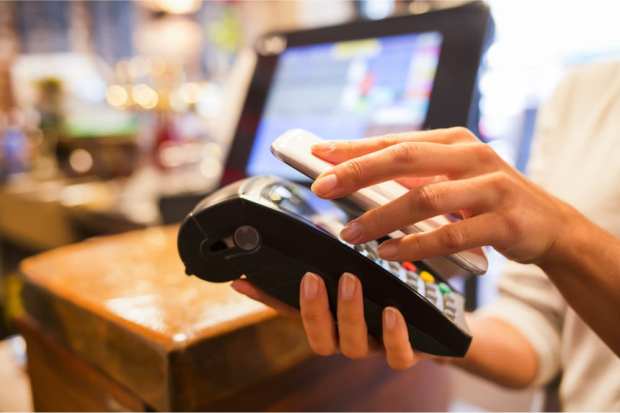Lost Wallets: Mobile Wallets Stuck In Low Gear, Lagging Cards And Cash

Though they’ve overcome serious technical hurdles, work well, and are now in the hands of billions of smartphone-owning consumers, mobile wallets including those from Big Tech players Apple and Google are starving for share as Q1 2020 usage slipped below an unimpressive 2019.
Between March 10 and March 18 PYMNTS surveyed 5,557 U.S. consumers who had shopped in a physical retail location during the previous week. By that time the nation had accepted the COVID-19 pandemic’s inevitability, triggering a wave of stock-up buying of household supplies as face masks were suddenly everywhere, and major coronavirus-induced lockdowns commenced.
Yet even the fear of touching POS terminals and cash didn’t nudge contactless mobile wallets that seem ideal for this moment. In PYMNTS’ April report Mobile Wallet Adoption 2020: Mobile Wallet Use And The COVID-19 Pandemic, we learn that “… Apple Pay is being used in only 5.1 percent of eligible point-of-sale (POS) transactions, marking a modest decline from 6 percent in 2019. Walmart Pay’s usage has fallen to an even greater extent, with the wallet being used for just 3.3 percent of eligible Walmart transactions in 2020, down from 4.5 percent in 2019.”
Apple Pay, Walmart Pay Go Unused Amid COVID-19 Frenzy
The failure of mobile wallets to catch on as a payment method is all the more confusing considering that access and in-store POS acceptance are at record highs. “The share of consumers with Apple Pay-capable iPhones — which include the iPhone 6 and later models — has continued to climb,” the report states. “The mobile wallet can now be used on 92.8 percent of all iPhones in the U.S, up from 39.3 percent in 2015 and 89.8 percent in 2019. The overall share of consumers with Apple Pay-capable smartphones has risen to 36 percent, up from 34.8 percent in 2019.”
Walmart Pay works on both Apple iOS and Android, and “… 81.2 percent of consumers had Walmart Pay-capable devices in 2020, up from 80.2 percent in 2019.”
More vexing still is the market potential of mobile wallets when compared to actual performance. The latest Mobile Wallet Adoption 2020 study notes that while penetration is good and the market potential for mobile wallets is estimated at $2.3 trillion (excluding automobiles), 95 percent of consumers who have mobile wallets don’t use them.
The high point to date for Apple Pay, according to the PYMNTS analysis, was 2017. Now, in the aftermath of the COVID-19 economic meltdown, the trendlines don’t signal a comeback.
Noting that Apple Pay enabled $4.5 billion in sales in 2015 — a number that had grown to almost $47 billion by 2019 — the report states that “… sales projections are expected to climb modestly to $52.7 billion in 2020 — without taking COVID-19 impacts into account. The increase in potential sales volume reflects a larger pie, but Apple Pay’s slice remains very small, at just 0.9 percent of total retail sales, excluding online and vehicle sales.”
Walmart doesn’t fare any better in the latest research. “The portion of sales made via Walmart Pay is projected to decline even more dramatically. The share of consumers using the digital wallet in 2020 stands at 3.3 percent, which equates to $9.6 billion in sales based on our pre-COVID-19 outbreak projections. This is down from 4.5 percent in 2019,” according to Mobile Wallet Adoption 2020: Mobile Wallet Use And The COVID-19 Pandemic.
Et tu, Millennials?
Of all the surprising findings in the Mobile Wallet Adoption 2020 study is the fact that more people shopped physical retail during the comparable 2020 week in March even as novel coronavirus bore down on the United States.
“An examination of the wider survey respondent pool shows that the overall share of consumers who reported shopping in-store within the past seven days was up slightly from 2019, from 78.1 percent to 80.2 percent in 2020,” the report states. “There was a marked shift in the share who reported making in-store purchases within the past 24 hours, however. We found that just 68.8 percent said they did so in 2020, compared to 80.9 percent who said the same in 2019. This suggests that shoppers may have been ‘loading their carts’ to decrease the number of trips they made or in anticipation of wider shutdowns.”
But even that frenzied shopping did not give a bump to mobile wallets, as the report concludes that “… mobile wallet usage rates are lower now than they were in 2019, and use is down among a key group of consumers: millennials.”
